Tips and Tricks for Healthy Legs
Summary
This article briefly explains what are veins and their functions, the causes of venous disease as well as possible therapies for venous disease. Also highlights the DOs and DON'Ts of common daily activities.
| Topics: |
1. The Veins and Their Function
The purpose of the veins is to return de-oxygenated blood to the heart.
Veins fall into two major categories: the superficial veins and the deep veins. The superficial veins lie immediately beneath the skin in subcutaneous fat. The deep veins lie beneath the deep fascia of the leg usually covered by the lower limb muscles, and are much larger in diameter than the superficial veins.
Unlike the arteries, the pressure of blood entering the veins is very low, and it has insufficient energy to return to the heart on its own.
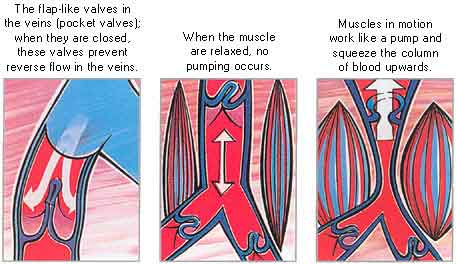
A series of pumps in the foot, calf and thigh assist with the return of the blood back to the right atrium. All veins in the lower limb contain valves which ensure upward flow towards the heart. Regular muscle contraction during walking pumps blood from the leg back to the heart. In addition to returning blood to the heart, the veins also act as a storage reservoir.
In the event of haemorrhage, increase in the tone of the smooth muscle in the vein walls can improve return to the heart and compensate for considerable blood loss.
2. The Causes of Venous Disease
Many problems with veins in the lower limb are blamed on Man's upright posture. At rest in the standing position, this results in high pressures in the veins.
Not everyone develops varicose veins and additional factors are required before varicosities appear. Varicose veins often run in families but the exact genetics of inheritance has not been established. in addition environmental factors are also important. Varicosities are much more common in western countries or in people who live a western way of life.
Studies suggest that varicosities are most likely to develop in those who stand up at their work without walking, and least common in those who spend a great deal of time walking. People who sit at their work are at intermediate risk.
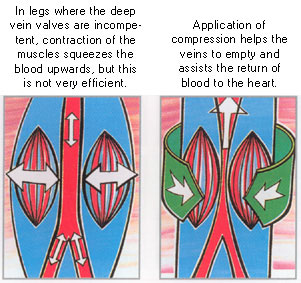
Some patients with large varicose veins may have no symptoms. Others with only small varicosities may complain of discomfort. Varicose veins may result in a wide range of symptoms including itching, mild discomfort, severe pain, cramps and leg swelling. Occasionally patients with varicose veins develop venous ulceration.
3. Therapy
A. Physiotherapy
The presence of chronic venous insufficiency may cause limitation of ankle movement.
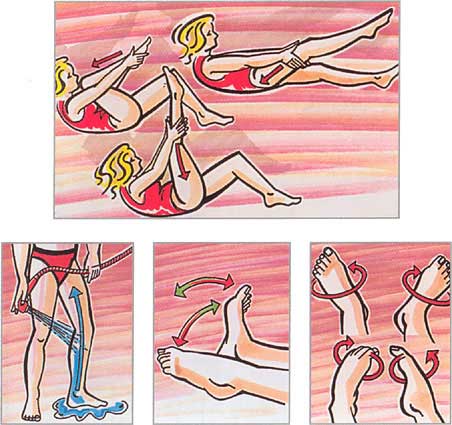
Physiotherapy may aid in maintaining the movement of the ankle on which the effectiveness of the calf muscle pumps depends.
B. Compression Therapy
Bandaging of the lower limb for the treatment of leg ulceration has been used for thousands of years. The reasons why compression is effective are probably related to both its effects on large veins as well as on the micro-circulation. Compression reduces the rate of refilling of veins after exercise by increasing the refilling time. In addition the speed of blood flow in the capillaries is increased. This combined effect on the macro- and micro-circulation probably explains the efficacy of this treatment.
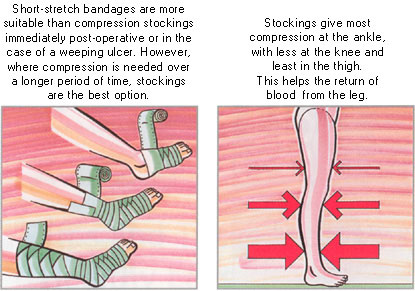
Compression stockings are beneficial in the prevention of venous ulcers as well as treating the symptoms of varicose veins. Many patients who are unwilling to undergo surgical treatment or sclerotherapy for varicose veins experience relief of their symptoms by wearing compression stockings.
Medical compression stockings apply external pressure to the leg. The pressure provided is greatest at the ankle gradually decreasing up to the thigh. The effect is to increase blood flow velocity and counteract raised venous pressure. This prevents oedema and venous hypertension.
4. Important Tips
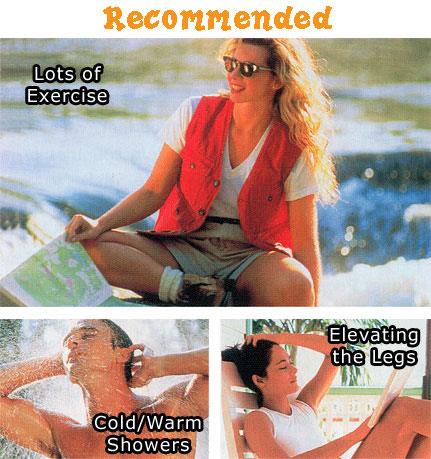
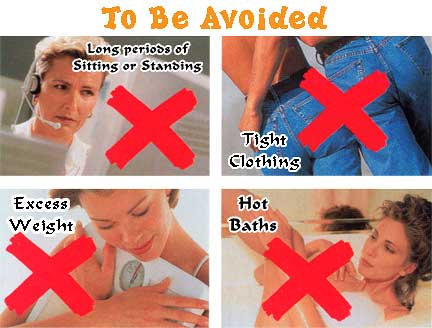
* Venosan® is a registered trademark of Salzmann AG, St. Gallen, Switzerland.
Article Links
See other medical related articles:- About Futuro: Support Hosiery
- About Mediven Compression Stockings
- About T.E.D. Anti-embolism Stockings
- Compression Classes for Graduated Compression Hosiery
- Prevention of Deep Vein Thrombosis (DVT)
- Skin Breakdown and TED Stockings
- Taking good care of your legs
- TED Stockings: Proven DVT reduction through published peer reviewed clinical studies
- Tips and Tricks for Healthy Legs
- Veins of the Leg
- When a blood clot forms in the leg ... (.jpg, 119Kb) The Sunday Times, 30 December 2001
- CE Marking (European Medical Device Directive 93/42/CEE)












